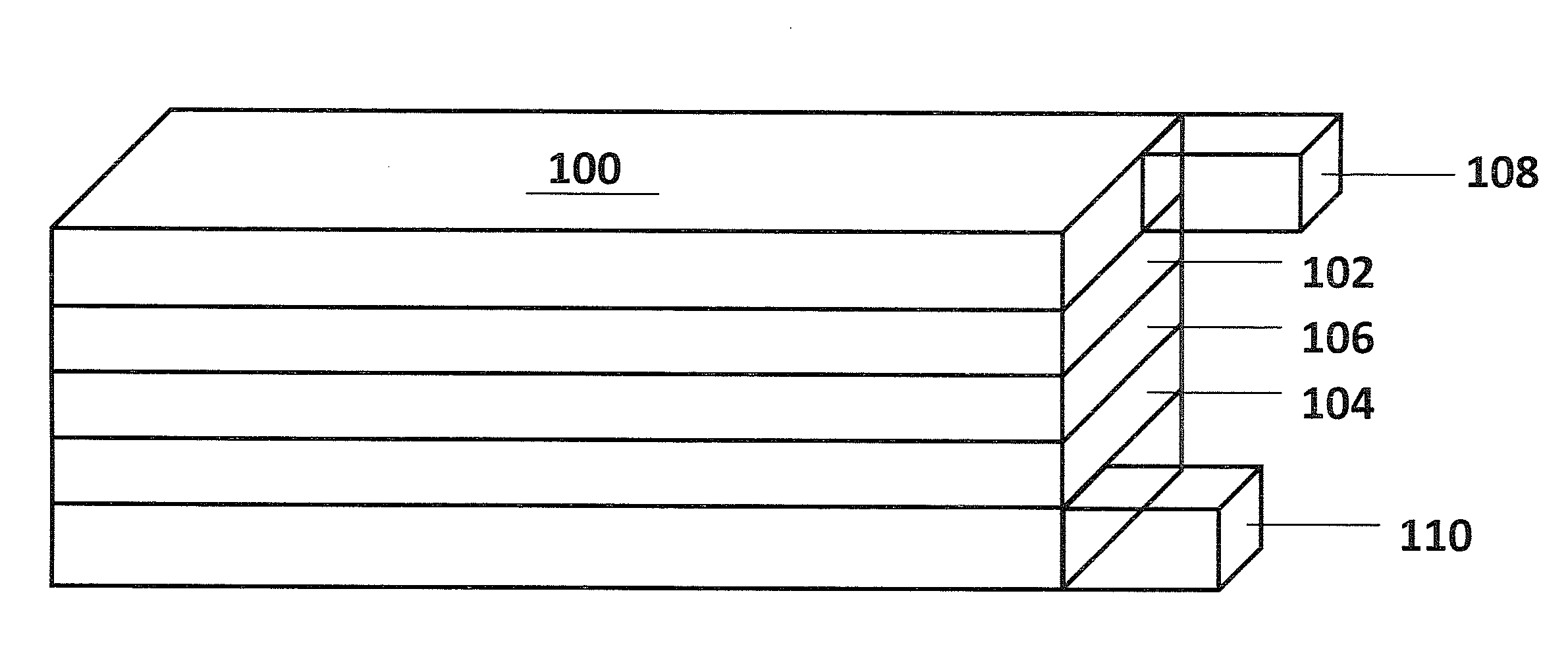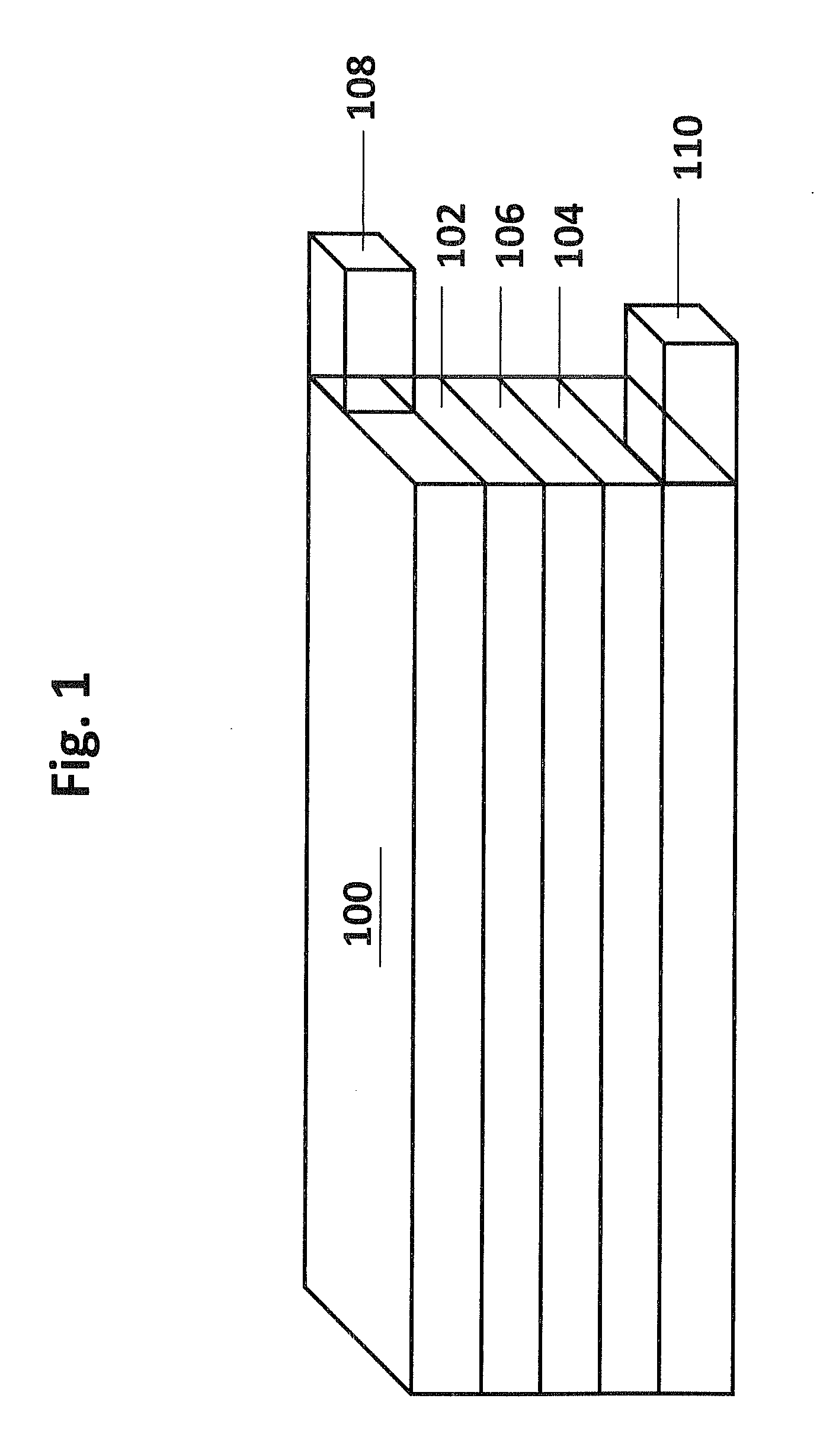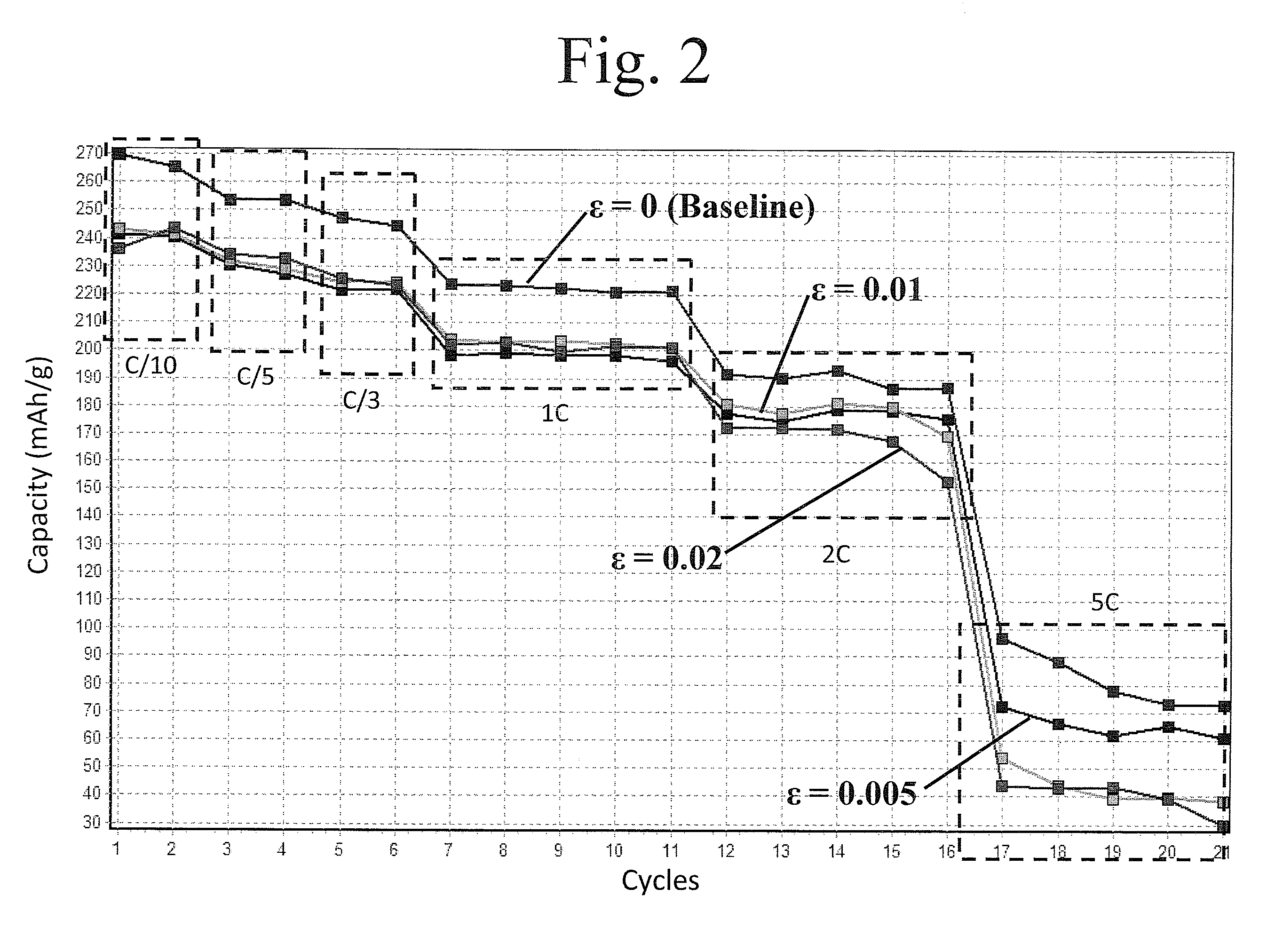Lithium doped cathode material
a cathode material and lithium doped technology, applied in the direction of nickel compounds, cell components, sustainable manufacturing/processing, etc., can solve the problems of low energy density of battery cells and no significant improvement in energy density
- Summary
- Abstract
- Description
- Claims
- Application Information
AI Technical Summary
Benefits of technology
Problems solved by technology
Method used
Image
Examples
example 1
Synthesis of the Lithium Doped Complex Metal Oxides
[0079]This example demonstrates the formation of a desired positive electrode active material using a carbonate or hydroxide co-precipitation process. Stoichiometric amounts of transition metal precursors were dissolved in distilled water to form an aqueous solution with the metal salts in the desired molar ratios. Separately, an aqueous solution containing Na2CO3 and / or NH4OH was prepared. For the formation of the precursor powder samples, one or both solutions were gradually added to a reaction vessel to form metal carbonate or metal hydroxide precipitates. The reaction mixture was stirred, and the temperature of the reaction mixture was kept between room temperature and 80° C. The pH of the reaction mixture was in the range from 6-12. In general, the aqueous metal solution had a concentration from 1M to 3M, and the aqueous Na2CO3 / NH4OH solution had a Na2CO3 concentration of 1M to 4M and / or a NH4OH concentration of 0.2-2M. The met...
example 2
Batter Performance—Lithium Foil Negative Electrode; Lithium Dosed Positive Electrode (Co-Precipitation)
[0082]This example demonstrates the battery performance of coin cells formed from positive electrodes comprising lithium metal oxides with and without lithium doping. Doping was done during co-precipitation as described in Example 1 above.
[0083]Coin cell batteries were formed with positive electrodes incorporating both doped and un-doped lithium metal oxide (LMO) powders synthesized as described in Example 1. The LMO powders were mixed thoroughly with acetylene black (Super P™ from Timcal, Ltd, Switzerland) and graphite (KS 6™ from Timcal, Ltd) to form a homogeneous powder mixture. Separately, polyvinylidene fluoride PVDF (KF1300™ from Kureha Corp., Japan) was mixed with N-methyl-pyrrolidone (Honeywell—Riedel-de-Haen) and stirred overnight to form a PVDF-NMP solution. The homogeneous powder mixture was then added to the PVDF-NMP solution and mixed for about 2 hours to form homogene...
example 3
Battery Performance—Graphite Negative Electrode; Lithium Doped Positive Electrode (Co-Precipitation)
[0087]This example demonstrates the battery performance of coin cells formed from positive electrodes comprising lithium metal oxides with and without lithium doping. Doping was done during co-precipitation as described in Example 1 above. Coin cell batteries were formed as described in Example 2 with graphite as an active material substituted for lithium foil in the negative electrode. Specifically, a blend of graphite, optional conductive carbon and binder was used as the negative electrode to have from about 80-99 weight percent graphite. The negative electrode composition was coated onto a copper foil current collector and dried.
[0088]The coin cell batteries were tested for 750 charge and discharge cycles at discharge rates of C / 10 for cycles 1-2 and at C / 3 for cycles 2-750. During each charge cycle, a battery was charged to 4.5V and discharged to 2.0V. Plots of specific discharge...
PUM
| Property | Measurement | Unit |
|---|---|---|
| temperature | aaaaa | aaaaa |
| temperature | aaaaa | aaaaa |
| electrically conductive | aaaaa | aaaaa |
Abstract
Description
Claims
Application Information
 Login to View More
Login to View More - R&D
- Intellectual Property
- Life Sciences
- Materials
- Tech Scout
- Unparalleled Data Quality
- Higher Quality Content
- 60% Fewer Hallucinations
Browse by: Latest US Patents, China's latest patents, Technical Efficacy Thesaurus, Application Domain, Technology Topic, Popular Technical Reports.
© 2025 PatSnap. All rights reserved.Legal|Privacy policy|Modern Slavery Act Transparency Statement|Sitemap|About US| Contact US: help@patsnap.com



